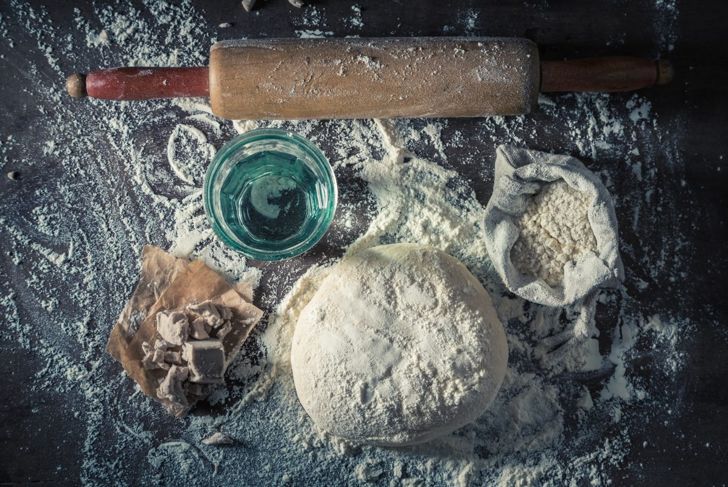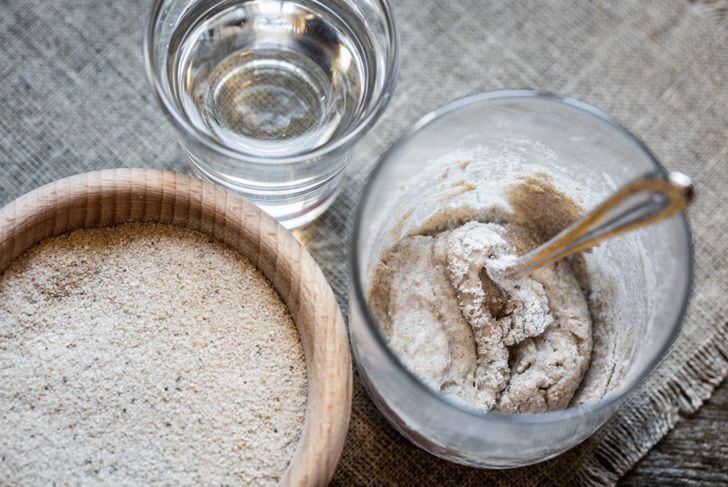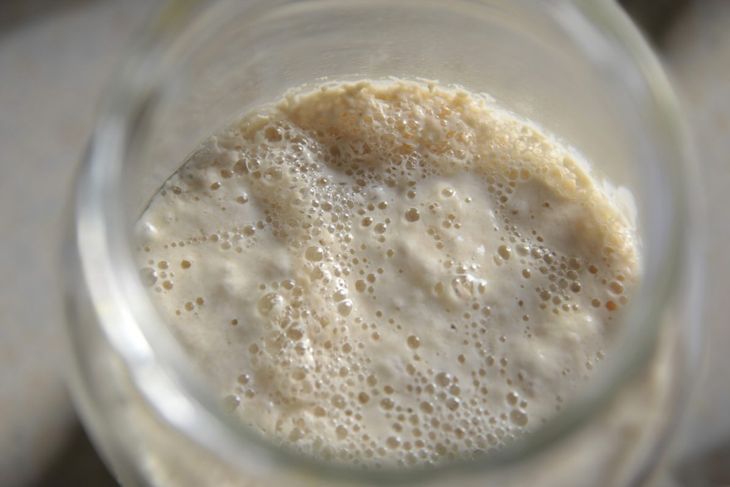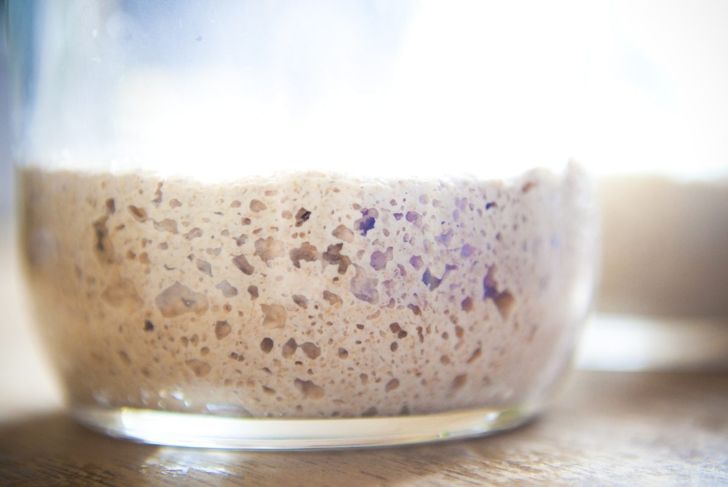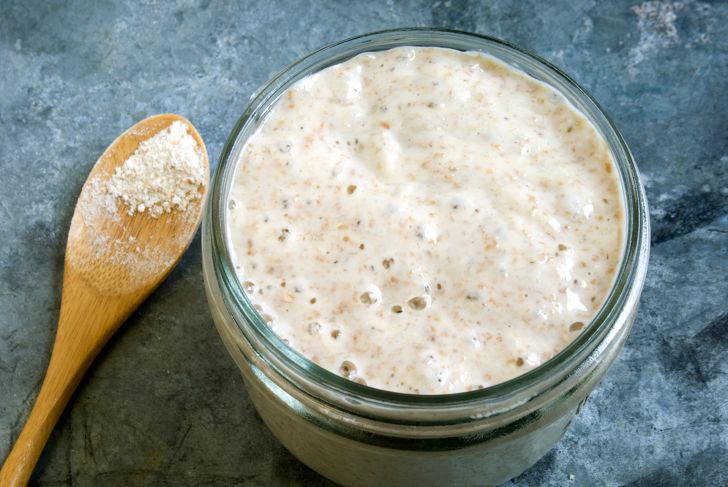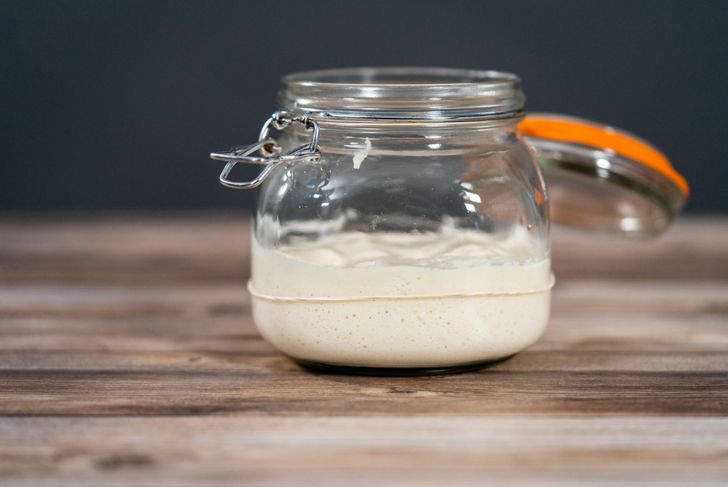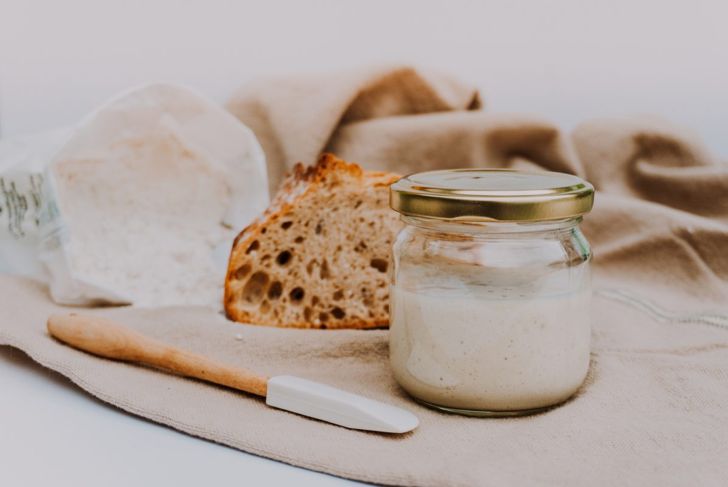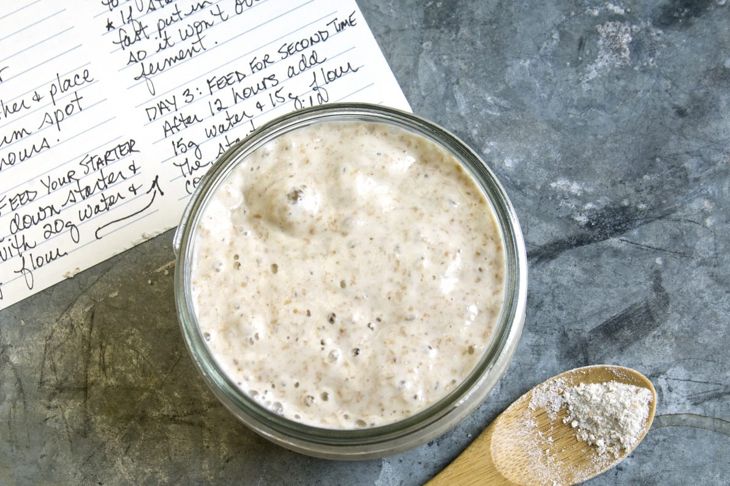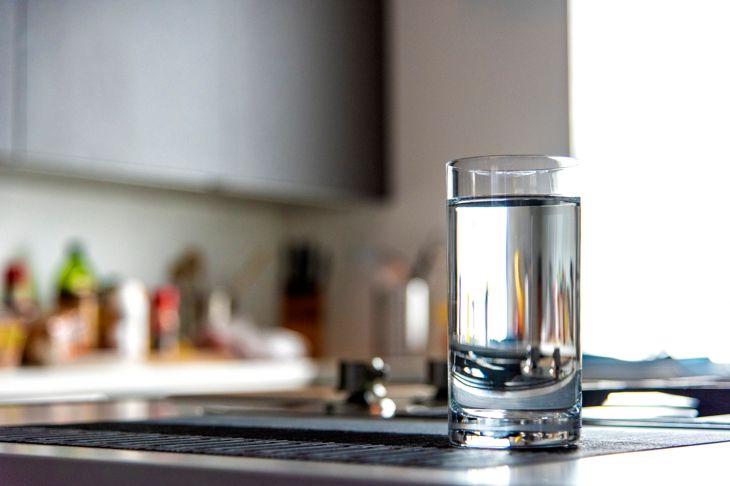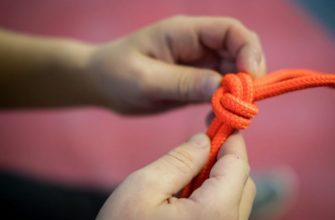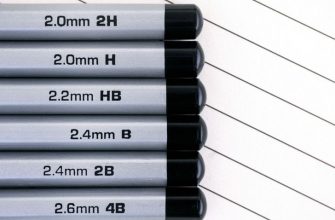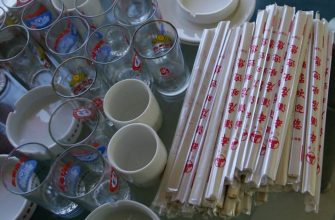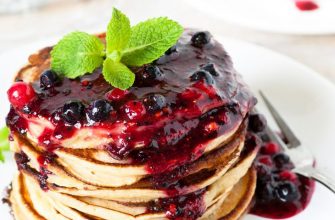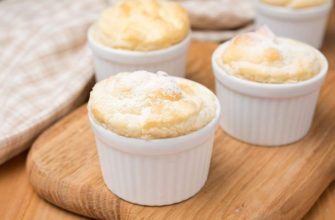eacA starter is a fermented mixture of flour and water that acts as a leavening agent in sourdough baking. The fermentation is produced by "good" bacteria and wild yeast and gives everything from bread to pizza dough a fluffy rise and tangy taste. Learning how to make sourdough bread with your starter is a low-stress way to feel like an artisanal baker, plus the need for just flour, water, and salt for a basic bread recipe will take a load off your grocery list. With some patience and observation, you’ll have your own starter in no time.
Ingredients and materials
Flour and water are the only ingredients necessary to make your own sourdough starter. Unbleached, all-purpose flour is a great choice for beginners, but whole wheat flour will also work if it's all you have on hand in your pantry. A glass jar is the best container for growing and maintaining your sourdough starter because the glass will not react negatively with the bacteria, plus you will be able to track the vertical growth of your starter. You may combine ingredients in a mixing bowl initially, but it is best to feed, grow, and maintain within a non-reactive container.
Day 1: Mix Flour and Water
A sourdough starter requires a one-to-one ratio of the two ingredients based on weight. Use 50 grams of flour and 50g of room temperature water. It's important to measure your ingredients in weight rather than volume to get an accurate one-to-one ratio. If you don't have a kitchen scale, use 1/4 cup of water and a scant 1/2 cup of flour. Stir together thoroughly, preferably with a wooden spoon. Keep in a roomy container at room temperature (70°F) for 24 hours. The cooler the temperature, the longer it will take for your starter to develop.
Day 2: First Feeding
After 24 hours, check in with your starter. It may look the same or may show some bubbling or growth. This all depends on temperature. At this point, remove half of the starter (½ cup). Discard half your starter, then add the same amount of flour and water as you did when starting out. You should be using equal amounts of starter, flour, and water. Cover the container and allow the starter to rest and grow at room temperature.
Day 3: Feed and Wait Some More
Now that your starter has been fed, your microbial friends will multiply in the culture and create the characteristic sourdough smell. Repeat the same process as before by discarding half your starter and adding flour and water. Cover the container and allow the starter to rest and grow at room temperature. You can begin a twice-a-day feeding schedule after this point, or wait to begin on day 4.
Day 4 Onward: Establish Twice-a-Day Feeding Schedule
Just as before, feed your starter by discarding some of your starter and mixing equal parts remaining starter, flour, and water. If you're worried about using a lot of flour for feedings, you can reduce the volume of your mixture. For example, use only 25 grams each of water, flour, and starter. Mix thoroughly, cover, and allow the mixture to rest at room temperature for 12 hours. After 12 hours, repeat the feeding routine. By the end of Day 5 or Day 6, you should have doubled your starter mixture. Continue to feed the starter twice a day until it matures. When the starter has matured, store it in the refrigerator and change schedule to weekly feeding.
Knowing When Your Starter is Ready to Use
Once your starter is doubling in size between twice-daily feedings, it’s ready for use in baking. The mature starter will have a strong scent and a thick, viscous consistency. The starter can mature anywhere from 6 to 10 days from starting. During the first two weeks, the starter may require more attention. Once it is mature, your feeding schedule will depend on how often you bake. If you bake frequently, you may need to do twice daily feedings and store the starter on a kitchen counter at room temperature. This allows the starter to be ready for use at all times. If you bake less frequently, the mature starter can be stored in the refrigerator and fed weekly.
Maintaining Your Starter
The good news is that once you’ve passed the first week threshold into a ripe, mature starter, there’s not a lot that can kill your starter. If you miss a feeding, just pick up where you left off. If the starter looks dry, add slightly more water. If the starter looks wet, add slightly more flour. And, while we recommend using a wooden spoon or non-reactive metal like stainless steel, mixing your starter with a metal spoon won’t kill it either. Sourdough starters are hardy and can be revived and perfected with just a little course-correction.
Troubleshooting Tips
Your sourdough starter only needs water and warmth to grow. If the starter is growing slowly, keep at a warmer temperature. You may see a clear liquid collect on top of the starter. This liquid is often called the “hooch” and is a byproduct of alcoholic fermentation. When hooch collects on top of your starter, it means the starter is overdue for a feeding. You can either mix the liquid into your starter or discard it before feeding your starter. While you shouldn’t worry about the hooch, other growths are cause for concern. Mold or bad bacteria can appear in streaks of pink or orange. If you see mold growing on your starter, you must toss your entire starter.
Types of Flour
A sourdough starter can be made with any grain-based flour. The starter can be made with any flour from rice to einkorn to wheat to spelt to rye. Luckily, the starter flour does not have to correspond with the bread flour. You can use any grain starter in your bread or pizza dough. Whole-grain flours like pumpernickel or whole wheat have many other components that may make the starter more finicky. However, their wild yeast gives a rich, strong taste to any dough. Save whole-grain flour starters for once you’re experienced with making sourdough starters. We recommend an easy, all-purpose white flour for beginners.
The Importance of Water and Temperature
Your sourdough starter needs water and warmth to grow. Feed your starter with a balanced mixture of flour and water. It’s no big deal to use tap water in your starter and for feeding. Most tap water has a low enough mineral content to not interfere with the starter. However, you may want to check if your tap water contains chlorine, as chlorine can interfere with or kill your starter. If your water is chlorinated, simply leave a cup of water out on the counter. The chlorine will evaporate naturally. Use tap or lukewarm water in your starter, depending on room temperature. Balance a warm room with cool water, or a cool room with warm water. Leaving your starter in the sun, however, can result in internal temperatures over 100°F, which can kill your starter. Just be mindful of water and temperature in starter maintenance.

 Home
Home Health
Health Diet & Nutrition
Diet & Nutrition Living Well
Living Well More
More